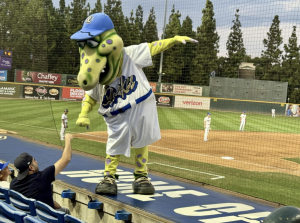The Forgotten Form of Writing

For a long time cursive writing been labeled as “forgotten,” but are we leaving anything behind?
December 8, 2021
For a long time, cursive has been labeled a “lost” form of writing. Its decline began around the ‘70s and has largely disappeared in the typical middle school classroom. Yet how did it move from such a highly admired skill to a form that’s used by fewer than 25% of people today?
As cursive continues to lose its popularity, there still remains those who realize its value.
Anne Trubek, an author who has studied the recovery of cursive said, “People are upset about the idea that you might not seem educated if you don’t know cursive.”
The idea of cursive is to make it seem like the writer has practical skill in business. According to History.com, 1700s culture presumed that those who had the ability to write neatly were of sufficient character who demonstrated good virtue.
“While everyone certainly needs to learn to type in today’s world, cursive handwriting has its benefits. It can be demanding to learn, but it teaches organization skills and assists children in composing their own thoughts and ideas,” said The Optometry Center for Visual Therapy.
Cursive provides a unique impact on people’s writing ability. Though It may take awhile to learn and it’s challenging to compose, it comes with unexpected benefits.
A recent study connected cursive with a growth in spelling and composition skills. Even kids with dyslexia have been shown to respond positively when learning the distinct style and kinesthetic movement. According to Edutopia, the form of writing helps kids learn to read and write because of the “integrated hand-eye coordination, fine motor skills, and other brain and memory functions.”
Over time, however, cursive has lost some of its natural flair and beauty.
“That sense of elegance is seldom seen in daily handwriting. In fact, the handwriting tradition of cursive, taught in classrooms around the country for decades, has seen something of a slow demise in recent years,” said PBS.
The connection and lovely letters and words created into cursive have a thin and graceful appearance. Nowadays, cursive has been simplified to a form that appears to have lost its touch of elegance.
“D’Nealian was first introduced in 1978 by Donald Thurber, a primary school teacher. It was supposed to be easier for children to learn, with its shorter letters and scripted movements,” said Holly Lyn Walrath.
The replacement of cursive with a similar D’nealian form has been ongoing. However as our world is evolving, there will likely come a day when this ‘old school’ script will be lost forever, buried only in our history books and early formal letters and documents.
“There is something remarkable about just the thought of someone sitting down for you. Taking out a piece of paper for you. Focusing their mind on the words they write for you. And through sloppy cursive and a cramped hand, they manage to tell you all the things that have ever mattered, in between the lines: “I care. I’m here. I see you. You’re more than just words on a screen to me,” said Hannah Brencher.





